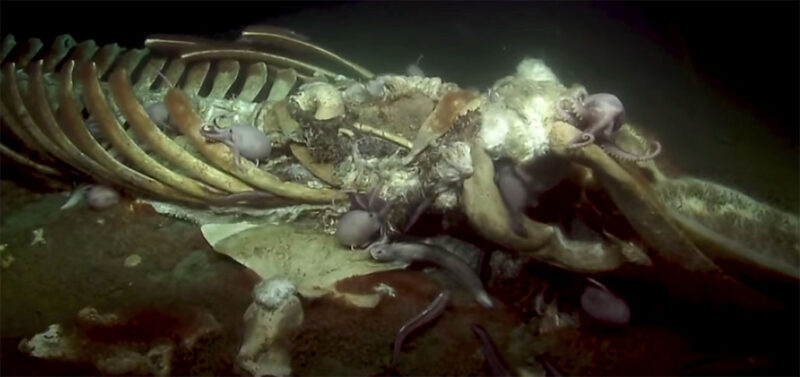Whales get a second life as deep-sea buffets
Last October, a team of marine explorers sent Hercules — a remote-controlled vehicle — to the bottom of the ocean. Its mission: to visit an octopus neighborhood. It was off the coast of central California, near an undersea volcano. Late one night, after scanning a long stretch of empty seafloor, Hercules’ spotlight and camera revealed a parade of curious creatures. First was a slender bottom-feeder called an eelpout. It was half-buried in the sediment. Then came a sea pig — a squishy thing that looks like a living pink balloon, but with tentacles.
“And another sea pig and another sea pig,” said Chad King, a marine researcher leading the watch. He works at the Monterey Bay National Marine Sanctuary in California.
“A whole squadron of sea pigs,” added Megan Cook, who runs educational programs for the Ocean Exploration Trust based in Old Lyme, Conn. This research nonprofit ran the expedition.
Together with other researchers, King and Cook were watching on monitors in a boat floating 3,000 meters (1.9 miles) above the seafloor. After the sea pigs, a scattering of octopuses came into view.
At last the rover’s cameras revealed why these creatures — and hundreds, maybe thousands of others — had flocked to this undersea neighborhood. The carcass of a large whale had sunk to the spot near this long-dead volcano. The researchers gasped. They ooh-ed and aah-ed. “Whale fall,” they said, one after another, in excited near-whispers.
